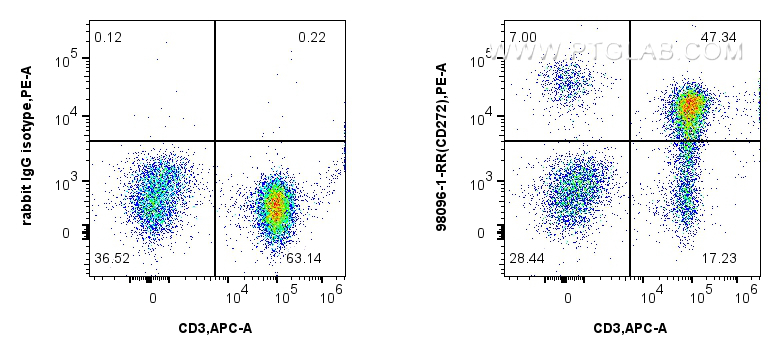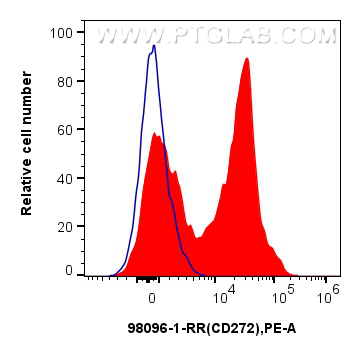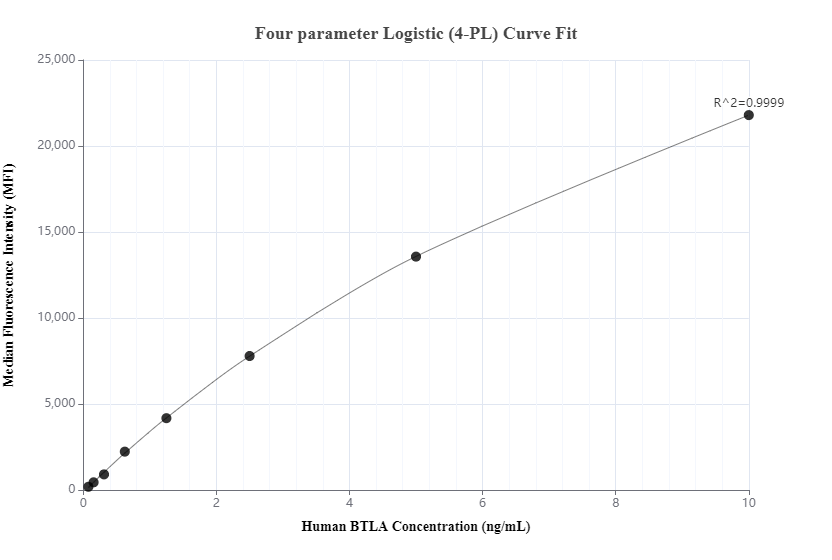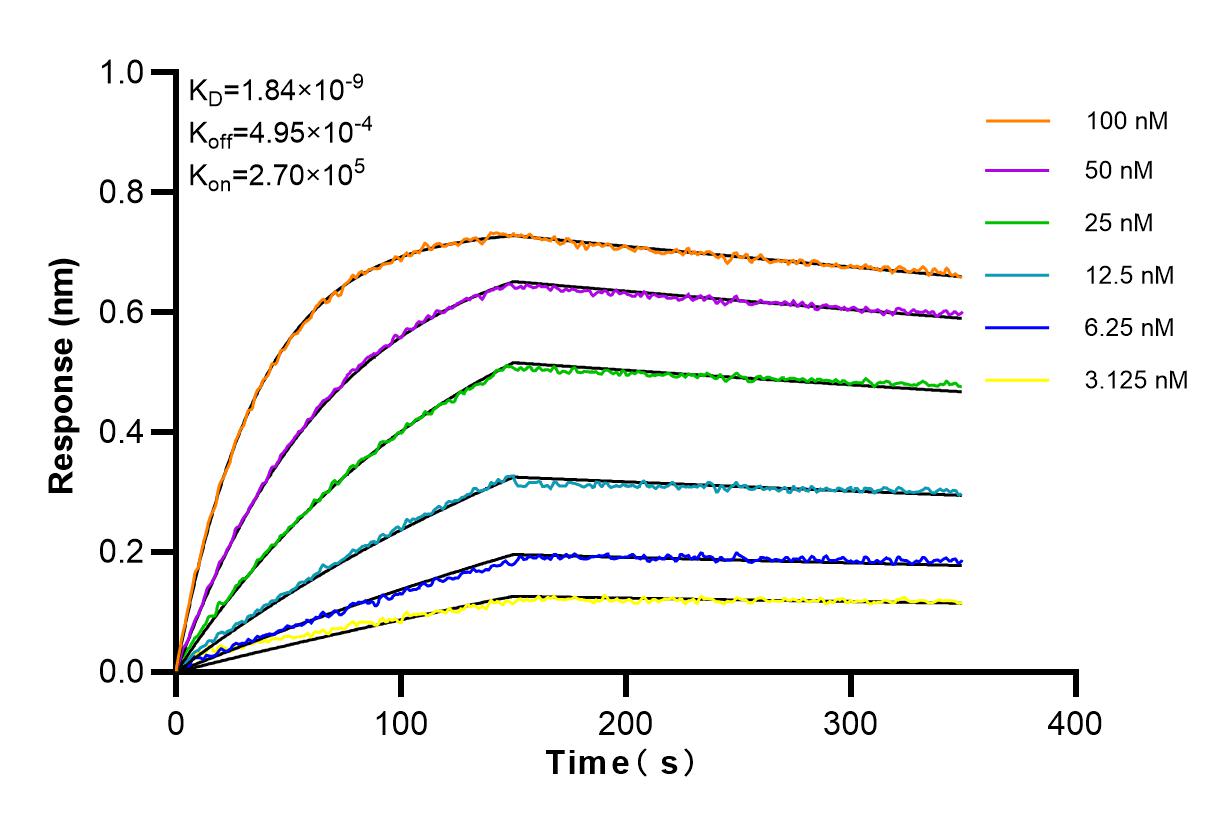验证数据展示
产品信息
98096-1-PBS targets BTLA/CD272 as part of a matched antibody pair:
MP01168-2: 98096-1-PBS capture and 84262-2-PBS detection (validated in Cytometric bead array)
Unconjugated rabbit recombinant monoclonal antibody in PBS only (BSA and azide free) storage buffer at a concentration of 1 mg/mL, ready for conjugation. Created using Proteintech’s proprietary in-house recombinant technology. Recombinant production enables unrivalled batch-to-batch consistency, easy scale-up, and future security of supply.
This conjugation ready format makes antibodies ideal for use in many applications including: ELISAs, multiplex assays requiring matched pairs, mass cytometry, and multiplex imaging applications.Antibody use should be optimized by the end user for each application and assay.
| 经测试应用 | FC, Cytometric bead array, Indirect ELISA Application Description |
| 经测试反应性 | human |
| 免疫原 | Recombinant Protein 种属同源性预测 |
| 宿主/亚型 | Rabbit / IgG |
| 抗体类别 | Recombinant |
| 产品类型 | Antibody |
| 全称 | B and T lymphocyte associated |
| 别名 | BTLA, B- and T-lymphocyte-associated protein, B- and T-lymphocyte attenuator, B and T lymphocyte associated, B and T lymphocyte attenuator |
| 计算分子量 | 289 aa, 33 kDa |
| GenBank蛋白编号 | BC107091 |
| 基因名称 | BTLA |
| Gene ID (NCBI) | 151888 |
| 偶联类型 | Unconjugated |
| 形式 | Liquid |
| 纯化方式 | Protein A purfication |
| UNIPROT ID | Q7Z6A9 |
| 储存缓冲液 | PBS only , pH 7.3 |
| 储存条件 | Store at -80°C. The product is shipped with ice packs. Upon receipt, store it immediately at -80°C |
背景介绍
BTLA ( B and T lymphocyte attenuator), also known as CD272, is a member of the CD28 superfamily and is a type I membrane glycoprotein identified as an inhibitory receptor (PMID: 33859648). BTLA is extensively expressed in lymph nodes, thymus, and spleen, with little or no expression in organs such as the heart, kidney, brain, and liver (PMID: 33859648). Among immune cells, BTLA is primarily expressed in B and T cells, with higher expression in B cells compared to T cells in the mouse spleen (PMID: 33859648). BTLA plays a crucial role in regulating stimulatory and inhibitory signals in immune responses.



